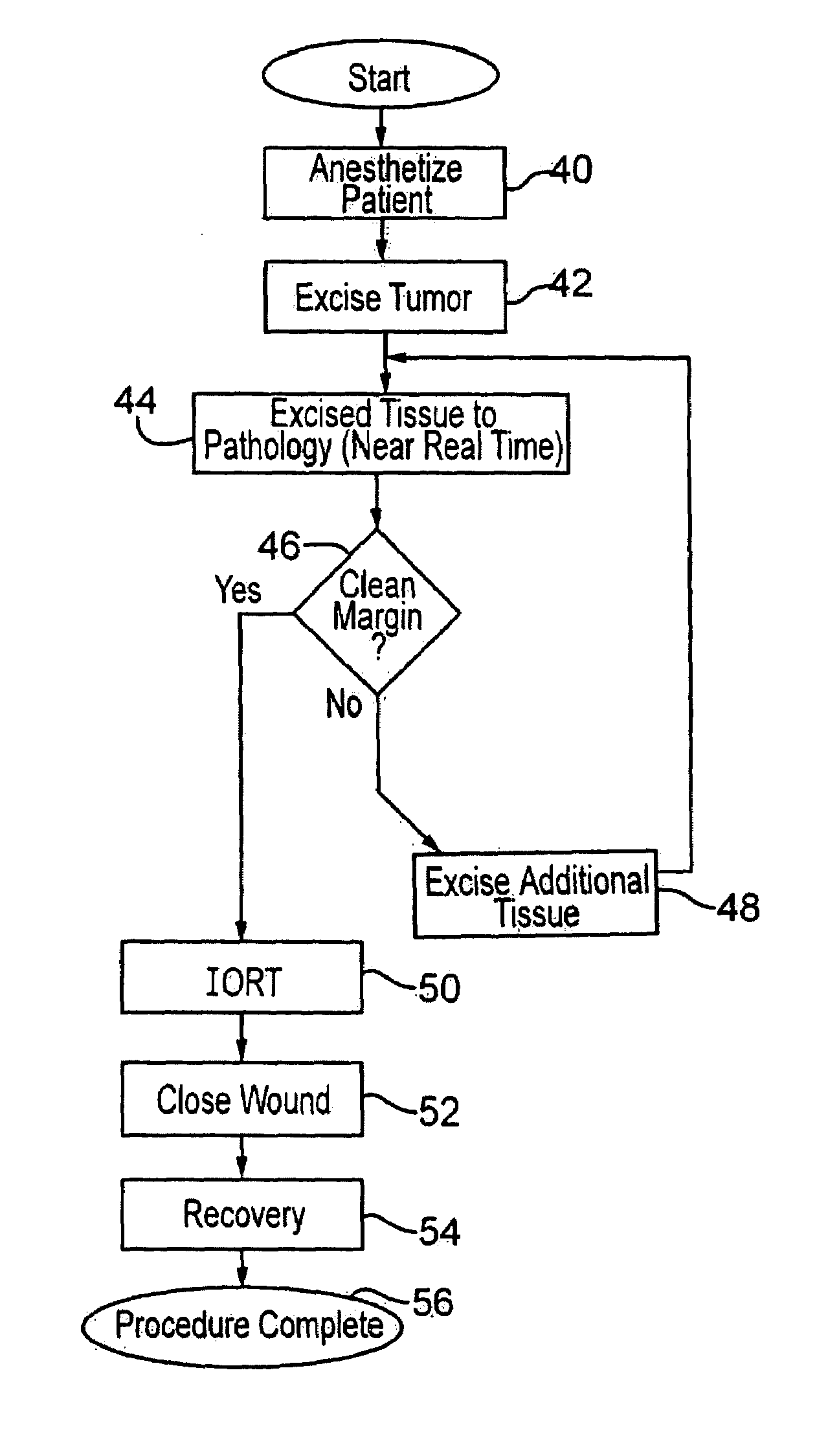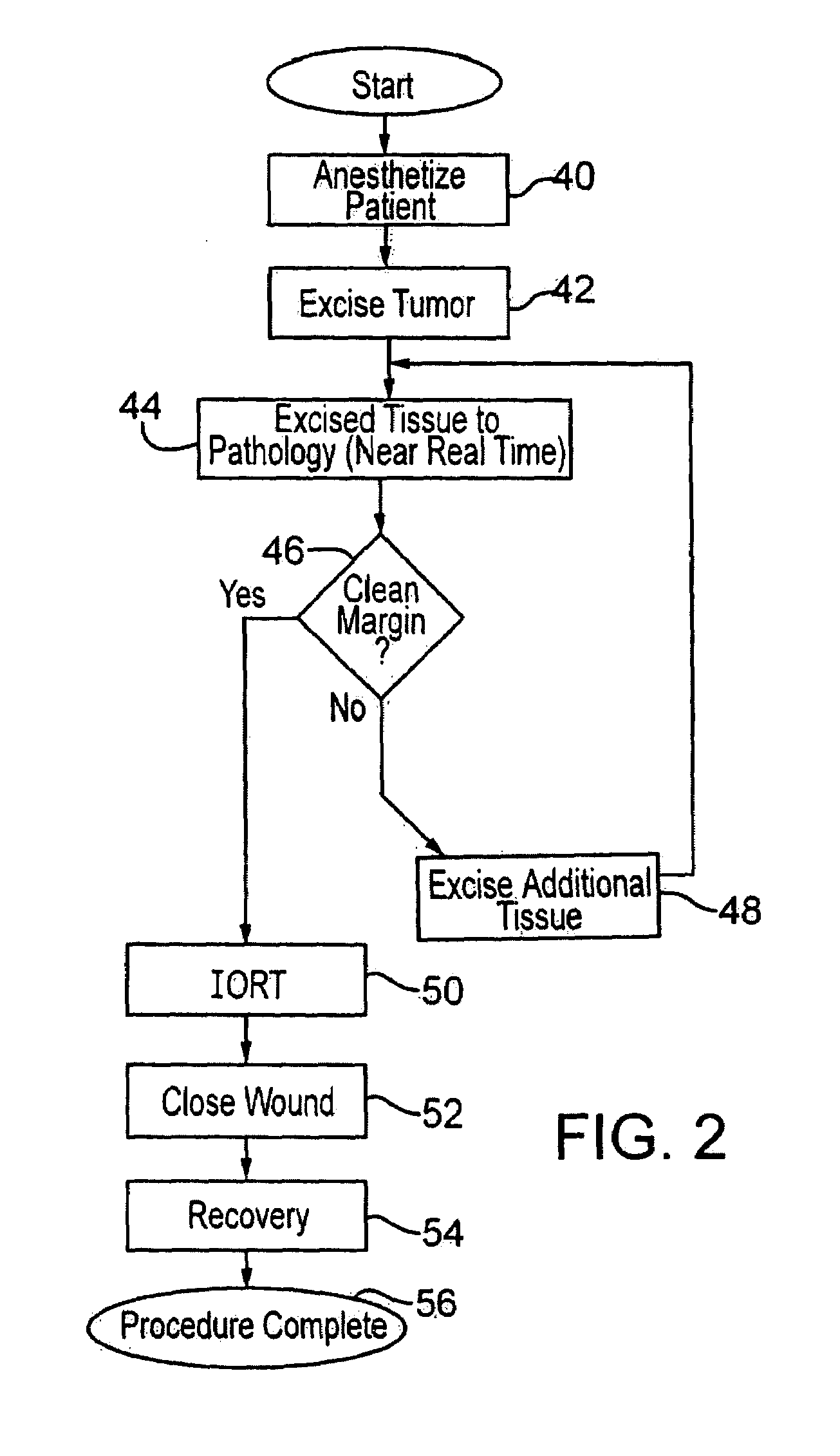Method for radiation treatment
a radiation treatment and radiation therapy technology, applied in the field of breast cancer treatment, can solve the problems of inability to move the patient for imaging, logistically difficult if not impossible, and the intraoperative radiation treatment is difficult if not impossible, and achieve the effect of accurately treating the prescribed volume without damage to sensitive areas
- Summary
- Abstract
- Description
- Claims
- Application Information
AI Technical Summary
Benefits of technology
Problems solved by technology
Method used
Image
Examples
Embodiment Construction
[0029]FIG. 1 shows typical current practice, prior to the present invention, for excising a tumor, particularly from the breast of a patient, and the post-operative procedure. The patient is anesthetized as indicated at 10, and the tumor is excised as indicated at 12 in the drawing. Following excision, the surgical wound is closed as noted at 14, and the patient recovers as shown in the block 16 and is sent home.
[0030]Meanwhile, the excised tissue is sent to pathology as shown at 18, and the pathology of the tissue is determined as to whether there is a clean margin, as indicated at 20. As explained above, this takes some time. Different surgeons apply different standards as to whether a margin is sufficiently clean such that radiation treatment is judged to be sufficient to remove all remaining microfoci disease which might remain. If the physician decides the pathology of the tissue does not indicate a clean margin, as at 21, then further excision is deemed to be necessary. Thus, ...
PUM
 Login to View More
Login to View More Abstract
Description
Claims
Application Information
 Login to View More
Login to View More - R&D
- Intellectual Property
- Life Sciences
- Materials
- Tech Scout
- Unparalleled Data Quality
- Higher Quality Content
- 60% Fewer Hallucinations
Browse by: Latest US Patents, China's latest patents, Technical Efficacy Thesaurus, Application Domain, Technology Topic, Popular Technical Reports.
© 2025 PatSnap. All rights reserved.Legal|Privacy policy|Modern Slavery Act Transparency Statement|Sitemap|About US| Contact US: help@patsnap.com



